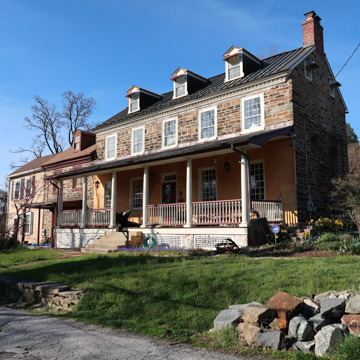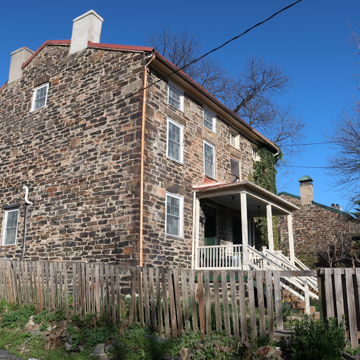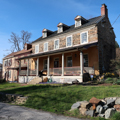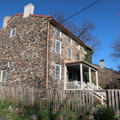This handsome stone house was built as the summer residence of Quaker industrialist and abolitionist Elisha Tyson adjacent to his Laurel Flouring Mill. Erected c. 1790, Tyson’s mill launched the industrial development of this area of the Jones Falls, accessed by the new Falls Turnpike that Tyson helped establish in 1805. Tyson is recognized as an important advocate for African American civil rights as a founder of the Maryland Society for the Abolition of Slavery (1789) and Baltimore’s first permanent school for Blacks, the African Academy (1797), and through the establishment of safe houses along the Underground Railroad.
His house is a vernacular interpretation of Federal architecture built of rough-cut, randomly coursed local granite, parged under the front porch, with a servant’s quarter wing. The mill and house were purchased c. 1840 and redeveloped as Mount Vernon Mills. Although the mill burned in 1843 and was replaced with spinning mills, Tyson’s house was retained for the mill superintendent.
Stone semidetached millworkers’ housing, known as Stone Hill, was then built around the Tyson House. Lining the one- to two-block-long Pacific, Puritan, Bay, and Field streets, they are two-bays per unit with shared, single-story rear kitchen wings served by alleys. While typical of the unit types built by paternalistic millowners, these are somewhat more refined by their stone construction, raised basements, front porches, and details such as quoining, brick-end lintels, and doorway transoms.


















